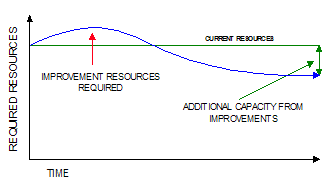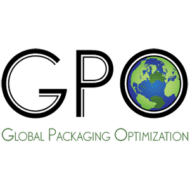Published: packworld.com, July, 2009 (http://www.packworld.com/webonly-27710)
The focus on maintaining day to day momentum, especially in today’s business environment, is likely preventing many Package Development organizations from continuing to improve performance over the long term. Improvement requires clearly defining, articulating, implementing and maintaining seamless alignment between your Vision, Mission, Strategies, Objectives, Tactics and Processes to successfully manage Package Development throughout the entire scope of involvement. This is critical in any economic environment, but even more so when companies are facing the today’s challenges. The current environment has resulted in many companies magnifying the focus on trying to succeed in the present, with minimal time to consider how to improve package development efforts to be more productive in the future. If you only focus on what appear to be the most pressing business demands, you will voluntarily be committing yourself to more “under-optimized performance” in the future.
It is difficult for Package Development leaders to focus on the big picture of continually improving and optimizing performance in the best of times. This requires an unusual amount of effort to assure all facets are addressed. A critical aspect of your job is to make an objective, overview assessment of your organization’s performance and take actions to make improvements. If you only have time to focus your efforts on delivering against the expectations of getting current programs done immediately, this use of your time is preventing you from improving your department’s capabilities and performance. The challenge then becomes finding the additional resources to add an organized improvement initiative to current work responsibilities, with some guarantee of success.
A famous W. Edwards Deming quotation; “How were they to know, they were only doing their best”, inspires thinking beyond the conventional scope of what is meant by best. This quote was not intended to be a personal assault, but rather to emphasize the critical importance of business leadership continually redefining best. Most people translate doing your best to mean performance using all the tools, skills and experience one has developed throughout their career. While doing your best is critical at any given point in time, consistently doing better is the key to long term excellence. This redefinition requires fully engaging in the concepts of continuous improvement of structure, direction and processes. It also requires having quantitative methods to measure the improvement of ongoing performance and final results. Continually improving through use of this data will assure all functions in the department focus on performing the best possible way on the most critical tasks to be accomplished.
Any improvement initiative will require added work to already full schedules. As shown in Figure 1, the green line represents the current level of resources available to accomplish work. Resources can be considered mainly to be personnel, but also can be interpreted as financial. The blue line represents the effect on resource requirements needed as you progress through the planning and implementation of an improvement initiative.

FIGURE 1
Initially, resource requirements increase as you start to put a systematic plan in place and begin process improvement. Resource requirements will continue to increase until you have defined and started to implement the new processes and improvements. As effectiveness improves over time due to increased efficiency, the curve will begin to turn downward, requiring fewer resources. Continuous improvement from this point on will lead to using fewer resources and result in better performance and greater productivity. Once your resource requirements become less than originally required, you are then creating additional capacity for your team and are well on the way to redefining and embodying the word best.
The length of time required for additional effort at the beginning of the transformation is dependent on the complexity of the organization. Regardless of the company’s size, the fundamental solutions for optimizing performance of any packaging department are constant. However, the complexity of defining and implementing solutions geometrically increases from single location companies to global organizations.
It is easy to assume the key component for improvement is the amount of additional resources applied to the improvement effort. In other words, if you significantly increase resources to focus attention on the improvement effort, the time until you begin seeing improvement will be drastically shortened. Unfortunately, many of the processes required to lead to improvement need to be sequentially developed, rather than in parallel. This limits how fast you can turn around an organization. You must also recognize many of the best ideas for evaluating the status quo and identifying improvement will come from your existing staff. Utilizing any significant increase in staff will require training them in the current ways of operating, further fragmenting the efforts of existing staff managing the day to day activities.
You must recognize your objective won’t be solely improving and implementing processes. You will be creating a new culture though implementing change. These two words strike fear into the hearts of many people. This is where exceptional leadership skills are essential to invoke confidence that the result of everyone’s efforts will not only be a more productive package development effort, but also a more rewarding career experience for everyone.
During the course of my career, I have been called upon to lead the package development improvement process for several large corporations. I rapidly learned there isn’t a universal solution for completing this type of assignment. The approach must be tailored to specific company objectives. The size of the company, number of locations, size of the department, cooperation from other departments and scope of desired change from the present all have to be considered. It is safe to say that the greater the number of locations and the larger the department, the greater the challenge.
Cultural differences around the world present one of the greatest challenges to implementing effective change in global companies. These differences create the added challenge of effectively communicating to assure ongoing, universal understanding of the improvement effort. Although English is the accepted language for conducting international business, you must recognize the inherent challenges to effective communication when the first languages of your associates and suppliers are different. Their fluency levels in English will also vary, making it essential to continuously confirm joint understanding of all involved. In addition, effective communication is required to remotely manage the objectives of your effort with other departments in the company, as different regions will want to maintain current local processes.
As you work through any initiative it is natural to develop plans that sequence milestones and tasks as you would like them to unfold. This plan should include the results you expect to accomplish with predefined success criteria. As we have all experienced, unexpected events can occur that do not align with your expectations. In addition to your optimal plan, you must attempt to define the alternative scenarios that might occur along the way. By consciously considering potential obstacles for each stage of your improvement process, you will be prepared with corrective actions needed to get back on plan. It is also critical to utilize a reliable decision making process to quantitatively evaluate your predefined success criteria when you reach each milestone. Timely, objective decision making is a critical part of a successful planning process.
Successful, continuous improvement is achievable, regardless of the size of the company. The key areas to address are:
- Aligning corporate management sponsors for change
- Focusing on providing the best packages to your consumers
- Benchmarking current processes and results
- Developing clear, concise objectives for improvement
- Matching the skill sets of staff members w/ future organizational requirements
- Defining areas requiring training
- Optimizing effective teaming skills with all inter-related departments
- Negotiating support from other functions affected by the change
- Encouraging other functions to mirror objectives of the improvement effort
- Developing a decision making process to evaluate the efficacy of every improvement change
- Implementing a project planning system with stage gate decision points for development and implementation
- Developing concise, efficient processes for each departmental activity
- Communicating the benefits of change throughout the organization
- Issuing complete, concise, timely packaging specifications
- Empowering all involved to play a part in leading a successful change.
This will not be a simple transformation, but is essential for establishing ongoing package development excellence. It is definitely achievable given the proper time and attention. Seeking external guidance to minimize the additional demands of your time will help accelerate your department’s improvement, as well as provide the benefit of objective focus on the timing and sequence of the required improvement steps.
In conclusion, start your package development improvement initiative with the overall objective of providing optimal packaging solutions to your consumers and customers. Imagine the value your department will provide your company once everyone is doing their best, on a greater volume of programs to build your business, in the most efficient, cost optimized, flawless and personally rewarding fashion.
Robert C Collins II, CPP/MH is the President of Global Packaging Optimization, an organizational improvement consultancy; Phone 781-635-7914 or email [email protected]
Click here to download a PDF.
